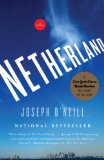Summary | Excerpt | Reading Guide | Reviews | Beyond the Book | Readalikes | Genres & Themes | Author Bio

A Novel
by Joseph O'Neill
By local standards, however, Walker Park is an attractive venue. Tennis courts said to be the oldest in the United States neighbor the cricket field, and the park itself is surrounded on all sides by Victorian houses with elaborately planted gardens. For as long as anyone can remember, the local residents have tolerated the occasional crash of a cricket ball, arriving like a gigantic meteoritic cranberry, into their flowering shrubbery. Staten Island Cricket Club was founded in 1872, and its teams have played on this little green every summer for over a hundred years. Walker Park was owned by the club until the 1920s. Nowadays the land and its clubhouse—a neo-Tudor brick structure dating back to the 1930s, its precursor having been destroyed by fire—are the property of the New York City Department of Parks and Recreation. In my time, a parks department employee, a phantom-like individual who was never seen, reportedly lived in the attic. The main room was rented out to a nursery school, and only the basement and the beaten-up locker room were routinely made available to cricketers. Nevertheless, no other New York cricket club enjoys such amenities or such a glorious history: Donald Bradman and Garry Sobers, the greatest cricketers of all time, have played at Walker Park. The old ground is also fortunate in its tranquillity. Other cricketing venues, places such as Idlewild Park and Marine Park and Monroe Cohen Ballfield, lie directly beneath the skyways to JFK. Elsewhere, for example Seaview Park (which of course has no view of a sea), in Canarsie, the setting is marred not only by screeching aircraft but also by the inexhaustible roar of the Belt Parkway, the loop of asphalt that separates much of south Brooklyn from salt water.
What all these recreational areas have in common are rank outfields that largely undermine the art of batting, which is directed at hitting the ball along the ground with that elegant variety of strokes a skillful batsman will have spent years trying to master and preserve: the glance, the hook, the cut, the sweep, the cover drive, the pull, and all those other offspring of technique conceived to send the cricket ball rolling and rolling, as if by magic, to the far-off edge of the playing field. Play such orthodox shots in New York and the ball will more than likely halt in the tangled, weedy ground cover: grass as I understand it, a fragrant plant wondrously suited for athletic pastimes, flourishes with difficulty; and if something green and grasslike does grow, it is never cut down as cricket requires. Consequently, in breach of the first rule of batting, the batsman is forced to smash the ball into the air—to go deep, as it’s said, borrowing the baseball term; and batting is turned into a gamble. As a result, fielding is distorted, too, since the fielders are quickly removed from their infield positions—point, extra cover, midwicket, and the others—to distant stations on the boundary, where they listlessly linger. It’s as if baseball were a game about home runs rather than base hits, and its basemen were relocated to spots deep in the outfield. This degenerate version of the sport—bush cricket, as Chuck more than once dismissed it—inflicts an injury that is aesthetic as much as anything: the American adaptation is devoid of the beauty of cricket played on a lawn of appropriate dimensions, where the white-clad ring of infielders, swanning figures on the vast oval, again and again converge in unison toward the batsman and again and again scatter back to their starting points, a repetition of pulmonary rhythm, as if the field breathed through its luminous visitors.
Excerpted from Netherland by Joseph O'Neill Copyright © 2008 by Joseph O'Neill. Excerpted by permission of Pantheon, a division of Random House, Inc. All rights reserved. No part of this excerpt may be reproduced or reprinted without permission in writing from the publisher.




Don't join the book burners. Don't think you are going to conceal faults by concealing evidence that they ever ...
Click Here to find out who said this, as well as discovering other famous literary quotes!
Your guide toexceptional books
BookBrowse seeks out and recommends the best in contemporary fiction and nonfiction—books that not only engage and entertain but also deepen our understanding of ourselves and the world around us.